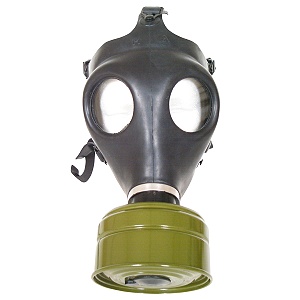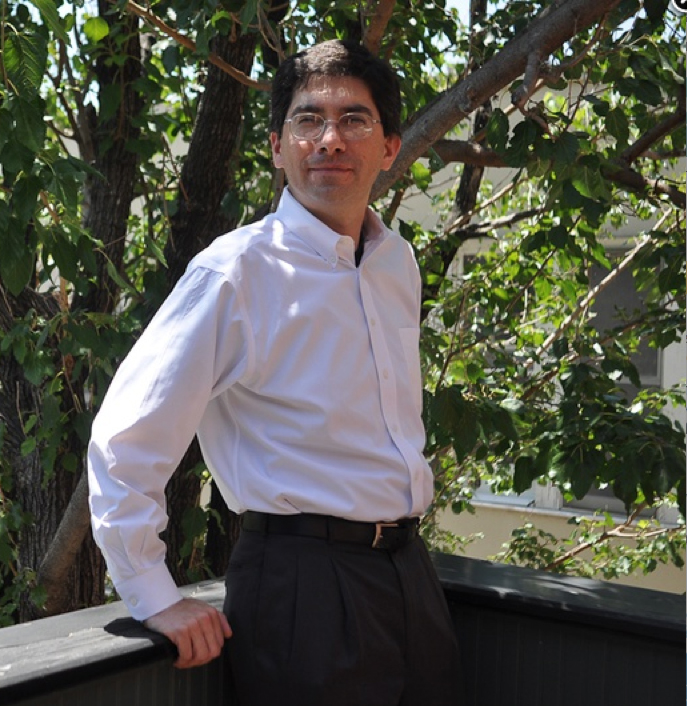Archive for August 2012
3rd DFW Ozone Monitor Officially Trips the 1997 Standard
 What were we saying about smog problems marching east with the gas drilling?
What were we saying about smog problems marching east with the gas drilling?
Yesterday's dirty air left the Dallas North site – south, and downwind of LBJ's mess – with its fourth exceedance of the 1997 85 parts per billion (ppb) ozone standard. That means it's an official violation of that standard since every monitor gets three strikes before being called out. It joins the Grapevine and Dallas Hinton Street monitors in violating a 15-year old standard that has been declared unprotective of human health and replaced with a tougher standard of 75 ppb. 16 of 20 DFW ozone monitors have already violated that new standard this year, but those don't start counting against us until around 2015-16 when it takes full effect. At the same time, violations of the '97 standard it replaced don't count either. So DFW remains in a kind of smoggy purgatory. This wil be the 21st year we won't be in compliance with the federal clean air smog standard.
Last Wednesday, fracking proponents on the Dallas City Council kept refering to the Texas Commission on Environmental Quality as if it was some kind of immutable final word on all things environmental. Alas, the TCEQ is not infallible. With DFW air quality, it's never even been right. TCEQ's 2012 clean air plan for DFW was supposed to give us historically clean air with NO VIOLATIONS of the 1997 ozone standard. Now we've had three with another two months of ozone season left.
For the record, in 2010 we had one monitor with four violations of the '97 standard. That was as close as we've come to complying with it. Last year we had seven. This year we have three and still counting. Despite all of these violations contradicting the state's predictions, TCEQ still insists in calling this air quality progress. It's not. It's continued non-compliance with an old standard that most of the rest of the country already meets.
Nation’s Only Public Hearing on Roll Back of Cement Plant Rules Scheduled for Aug 16th in DFW
 Environmentalists are angry at EPA for giving the public less than two weeks notice prior to the nation's only hearing on a rollback of new air pollution rules for cement plants that the agency says could save thousands of lives annually, including many in DFW.
Environmentalists are angry at EPA for giving the public less than two weeks notice prior to the nation's only hearing on a rollback of new air pollution rules for cement plants that the agency says could save thousands of lives annually, including many in DFW.
One of those who came in 2009, and vowed to show up again on the 16th was Ft. Worth resident Margaret DeMoss, who was instrumental in getting her city to adopt a "green cement" policy to reduce pollution from obsolete Midlothian cement kilns in southern DFW.
She also noted that in 2009, when the rules were being proposed, there were three national hearings coast to coast. Now that the rules are being weakened, there's only one.
"It's outrageous that the EPA would schedule this hearing at the last minute and in only one location in the nation; lot of other regions suffer downwind from cement kilns. Who will speak for them?"
Downwinders at Risk and other community groups repeatedly sued to get them enforced. That effort resulted in 2010 emission rules that were hailed as the largest single advance in air quality for the US cement industry, and were universally supported by citizens living near and around the nation's cement plants.
They had already passed all necessary regulatory review, just overcome their last legal hurdle, and were on their way to President Obama for his signature and implementation by 2013 when they got yanked by the administration's Office of Management and Budget earlier this year.
When the rules re-emerged, their enforcement was pushed back to 2015 and their strict Particulate Matter pollution provisions were considerably weakened.
According to EPA's own health impact studies for the rules, that two-year delay will cause at least 2000-5000 premature deaths nationwide.
Despite a halt in the burning of hazardous wastes at local cement plants in 2010, MIdlothian remains the home of the largest concentration of cement manufacturing in the entire U.S.
Three large cement plants – TXI, Holcim, and Ash Grove – are still the largest point sources of air pollution in North Texas, generating thousands of tons of air pollution.
Since DFW is downwind of Midlothian, Metroplex residents are exposed to more cement plant pollution than any other metropolitan area in the country, and represent a disproportional number of these 2-5000 annual deaths that EPA estimates will occur because of its rules delay.
"If these revisions are adopted, DFW residents will be paying a high price for the Administration's retreat," said Schermbeck. "That's why we must make our objections heard now."
He urged those that want to speak at the August 16th hearing to reserve a five-minute slot with EPA coordinator Pam Garrett by e-mailing her at garrett.pamela@epa.gov or calling (919) 541-7966
” A stunning increase in the frequency of extremely hot summers”
 That's James Hansen and other researchers' conclusion after looking at the past 60 years of thermometer readings from Mother Earth. They use last year's $5 billion drought here in Texas as a vivid example of the kind of thing that used to be rare, but no longer is, and they lay the blame squarely on human-made pollution.
That's James Hansen and other researchers' conclusion after looking at the past 60 years of thermometer readings from Mother Earth. They use last year's $5 billion drought here in Texas as a vivid example of the kind of thing that used to be rare, but no longer is, and they lay the blame squarely on human-made pollution.
"This is not a climate model or a prediction but actual observations of weather events and temperatures that have happened. Our analysis shows that it is no longer enough to say that global warming will increase the likelihood of extreme weather and to repeat the caveat that no individual weather event can be directly linked to climate change. To the contrary, our analysis shows that, for the extreme hot weather of the recent past, there is virtually no explanation other than climate change."
Wasting No Time, Texas Rushes To Apply Health Care Ruling to EPA “Mandates”
 A huge national law firm that the State of Texas has hired to represent it in various facets of its anti-EPA jihad has taken the rhetoric of the recent Supreme Court decision and is now attempting to apply it to federal environmental mandates.
A huge national law firm that the State of Texas has hired to represent it in various facets of its anti-EPA jihad has taken the rhetoric of the recent Supreme Court decision and is now attempting to apply it to federal environmental mandates.
According to an Energy and Environment article from last week,
"The focus for now is on part of the health care decision in which the court held, on a 7-2 vote, that the federal government cannot take away all of a state's Medicaid funding if it declines to implement new provisions that were introduced under the reform law. The court saw such a move as akin to coercion.
Congress cannot "penalize states that choose not to participate in that new program by taking away their existing Medicaid funding," Chief Justice John Roberts wrote in the majority opinion.
Lawyers at the Baker Hostetler law firm, which represents Texas, were clearly paying attention to the academic debate that immediately broke out, in which some scholars saw similarities between the Medicaid provisions in the health care law and how the federal government interacts with states over their role in enforcing the Clean Air Act via state implementation plans, known as SIPs."
Most legal scholars don't believe this will go anywhere, but this move is just more evidence that Governor Perry and Co. are still fighting the Civil War all over again.
Lungs Like Fish Oil
 A new study shows that regular use of fish oi supplements in a person's diet can protect against the harms associated with Particulate Matter (PM) pollution.
A new study shows that regular use of fish oi supplements in a person's diet can protect against the harms associated with Particulate Matter (PM) pollution.
"Twenty-nine people aged 50 to 72 took either olive oil or fish oil supplements for a month and then breathed concentrated outdoor air that contained extremely high levels of particulate matter pollution. After a short exposure to the high levels of particulate air pollution, heart rate variability decreased significantly in the participants who ate olive oil supplements. In contrast, the subjects on fish oil supplements showed little change. Researchers also found that the olive oil group showed longer repolarization duration and an immediate increase in two types of lipid levels in the blood (very low-density lipoprotein and triglycerides) after the exposures to concentrated air compared to the fish oil group."
Past studies have shown that exposure to particulate matter can lead to a variety of health problems such as asthma, stroke, heart failure, and decreased brain function. PM pollution in California alone is is estimated to cause 9,000 premature deaths per year. New PM emission rules for cement plants that are now being rolled back by EPA would save an estimated 2000-2500 lives per year nationally.
Dr. Al Breaks His Silence
 After over three months of not saying much about the circumstances of his resignation as EPA Region 6 Administrator, Dr. Al Armendariz used the online Texas Tribune for his coming-out this last week. He's joined the Sierra Club's Beyond Coal campaign as its southwest director.
After over three months of not saying much about the circumstances of his resignation as EPA Region 6 Administrator, Dr. Al Armendariz used the online Texas Tribune for his coming-out this last week. He's joined the Sierra Club's Beyond Coal campaign as its southwest director.
"I have a small handful of objectives. The first is to stop the construction of any new coal plants in Texas. And also to stop the expansion of any additional coal exports from Texas ports [to] overseas. The second objective is to work on the transition … to clean renewable sources of energy. And the third objective is to work really with all of the stakeholders in the state to further the development of renewable sources of energy, like wind and solar and geothermal."
Thank you, It WAS a Watershed Moment in the Dallas Drilling Fight
 Yesterday's Dallas City Council briefing on a new gas drilling ordinance was supposed to be a showdown between dueling spokespeople for pro and anti-fracking arguments. And it did provide lots of memorable exchanges and statements. But the most dramatic moment of the day came courtesy of the audience itself.
Yesterday's Dallas City Council briefing on a new gas drilling ordinance was supposed to be a showdown between dueling spokespeople for pro and anti-fracking arguments. And it did provide lots of memorable exchanges and statements. But the most dramatic moment of the day came courtesy of the audience itself.
Dallas municipal law attorney Terry Welch was coming to the end of his presentation on why the recommendations from the city's task force should be strengthened: If we're wrong and fracking turns out to be completely safe, then you can always come back and liberalize strict regulations. But you can't undo the damage once drilling takes place with insufficient safeguards. Err on the side of public health and safety.
And with that, 90% of the packed room erupted into at least 60-90 seconds of continued and loud applause. But that wasn't the moment.
Because he had ended early, even after this round of applause, Welch had time left. Mayor Rawlings noted that and said something to the effect that "If you want to keep applauding for 4 more minutes I won't objec…." The last words of that sentence had not even left his mouth before the crowd took him up on his offer, began clapping wildly again and within seconds jumped to its feet with a sustained standing ovation that went on for the longest time. It was one continuous loud and kinetic vote in favor of doing more that was aimed directly at the Mayor and Council. That was the moment.
This was no public hearing, but the public most certainly was heard. It was the first time the Council had seen the depth and breath of support for stronger drilling rules. The pent-up energy from that applause was like a Blue Norther hitting the Council horseshoe straight-on.
Likewise, it was the first time the Council's constituents had seen the depth and breath of the pro-drilling members' belligerence and hopelessly out-of-date attitudes. It produced a lot of head-shaking.
We hope to bring you selected video from the meeting over the next couple of days. Meanwhile, here's a pretty good summary from the live blogging the Morning News was posting (do tell!), as well as a more sedate article for the paper itself.
Some highlights:
– You Care. There were so many of you – in August during work hours – that they had to move the meeting from the smaller briefing room to the Council Chambers, which were quickly filled too. It was a tremendous turnout. Thank you.
– Industry isn't satisfied. It's clear now that industry is trying to rollback the required distances between homes and wells even further than what the city's Task Force recommended after their last-minute collapse in February. A variance of 750 feet is no longer adequate. Now they want 600 feet. That's 400 feet closer than a strip club is allowed to get to a home in the City of Dallas.
– The council most ardent proponents of drilling share Ireland's view that the on-going national debate has been settled in their minds, and there are no serious hazards to fracking in urban areas.
– Mayor Rawling is very much engaged in this process and issue. He was attentive, asked good questions, and kept the lengthy proceedings flowing smoothly but democratically. Whatever else you may think of him or his motives, he's focused and direct on this subject.
– Citizen advocates Scott Griggs, Sandy Greyson, Angela Hunt and Carolyn Davis all asked great questions and provided a counterbalance to the Troglodyte contingent of the Council. You might want to drop them a thank you note.
– "Sulfuric Sheffie" Kadane – In what was the most jaw-dropping exchange of the day, Councilmember Kadane asked Welch if he knew what kind of chemicals would be spilled at a fracking site. Not waiting for an answer, he offered not benzene, or toluene, or diesel fuel, but Sulfuric Acid. Perfectly harmless stuff! We use it to clean our swimming pools! A little Sulfuric Acid wasn't going to hurt anyone.
– Jerry "El Conejo "Allen – Councilman Allen was obsessed with all the "rabbit holes" Welch and other could go down in terms of the hazards of fracking and thought he had all the ammunition he needed from spending a couple of hours going down some of them via Google. These rabbit holes are known to the rest of us as research. Did Welch know that the Trinity River was full of treated sewage right now?! Did he know how many regulatory agencies oversaw fracking? Did he know that thousands of people die every year from exposure to chemicals in the home? Wasn't fracking only dangerous because people were talking about it? Above all else, he kept reminding everyone that the gas operators had already paid the city 34.8 million for lease rights and not only do they deserve something in return but that's a lot of money!
Angela "Law and Order" Hunt – The most revealing exchange all day was Hunt's cross examination of hostile witness Ed Ireland, the gas PR hack Kadane had chosen to give the industry arguments, over full disclosure of all chemicals being used in fracking. She asked Ireland if he had any problem with Dallas writing an ordinance that would demand the listing of every single chemical being used on site. Not at all, Ireland said. Of course, he added, the operators themselves don't always have the last say. They hire contractors like Haliburton to come in and actually do the fracking and THEY might have a problem disclosing their fracking fluid recipes. Three times Hunt posed the same question, never letting Ireland escape a conclusive, definitive answer. Do you support full disclosure? And Ireland gave three slippery answers that finally pulled the curtain away from the industry's premeditated deception.
We're gaining momentum. By the end of he day, there was such a stark contrast between the advocates and arguments for more protections versus the Hollywood-scripted arguments of the other side, that you could almost hear the collective council pivoting to our side, despite no vote being taken. We can't afford to be over confident, but if we keep the pressure on, we can win this fight.
Next stop – We need at least one, if not two evening public hearings on the ordinance. As you contact your city council reps, please be sure to include this request.
Now Frackers Whine About Process? Be at Dallas City Hall at 1pm To Make Them Really Mad
 According to a chain of e-mails published by the Dallas Observer, some industry supporters who were members of the Dallas Gas Drilling Task Force – the very same members who helped engineer the rollback of protections at the very last meeting without any opportunity for public comment – are all in a tizzy over council member Scott Griggs picking Task Force member Terry Welch to give today's presentation of the "Minority Report" of the Task Force recommendations beginning at 1 pm. They're claiming it's just not fair to pick someone who's actually knowledgeable about how and why the rollbacks occurred. Yep, that's some dirty dealing all right.
According to a chain of e-mails published by the Dallas Observer, some industry supporters who were members of the Dallas Gas Drilling Task Force – the very same members who helped engineer the rollback of protections at the very last meeting without any opportunity for public comment – are all in a tizzy over council member Scott Griggs picking Task Force member Terry Welch to give today's presentation of the "Minority Report" of the Task Force recommendations beginning at 1 pm. They're claiming it's just not fair to pick someone who's actually knowledgeable about how and why the rollbacks occurred. Yep, that's some dirty dealing all right.
It's really rich for those who hijacked the Task Force process to now complain about who gets to give the PowerPoint for the other side.
Who better to be able to talk about what the Task Force did and why than someone who was there? Well, the industry supporters on the Council picked good ol' Ed Ireland to give the rebuttal to Welch. Ireland showed up at exactly one meeting to testify on behalf of his clients. He has no idea what the Task Force debated prior to its votes. Maybe he doesn't look like such an inspired choice now.
Whatever the reason, this digital hissy fit is an indication the gas industry is desperate. Perhaps they're worried that their Task Force coup d'etat won't succeed. But you know what would make it a really horrible day for the fracking folks in Dallas? If all of you showed up at 1 pm at City Hall to once again vote with your bodies for stronger protections to be included in a new gas drilling ordinance, including off-sets. Come and watch what may be a watershed moment in this now two-year old fight.
Endocrine Disrupting Chemicals Linked to Endometriosis
 Another example of the insidious nature of endocrine disrupting chemicals is out.
Another example of the insidious nature of endocrine disrupting chemicals is out.
This week saw the publication of a study from the Eunice Kennedy Shriver National Institute of Child Health and Human Development in Maryland that shows an association between women with higher levels of a estrogen-mimicking pesticide and increased incidence of endometriosis.
Women were divided into groups with pelvic pain and no symptoms. Those with pain were more likely to be diagnosed with endometriosis if they had high blood levels of the estrogen-like pesticide hexachlorocyclohexane (HCH). Although HCH has been banned as a crop pesticide in the United States, it builds up and persists in the environment, so it remains in some food supplies.
Women with the highest blood of a sunscreen chemical, benzophenone, in their urine also had a higher risk of endometriosis according to the study, published in Environmental Science and Technology.
“Our studies are beginning to corroborate the idea that environmental estrogen may be associated with endometriosis,” said the Institute's Director Germaine Buck-Louis. But the link has a long toxicological history.
In 1993, the connection between endometriosis and environmental chemicals was discovered when Rhesus monkeys fed food contaminated with dioxins – hormone-disrupting pollutants created by waste incinerators and other industries – developed endometriosis 10 years later. (The Midlothian cement plants and the Exide lead smelter in Frisco have been the the largest industrial sources of airborne dioxin in North Texas over the last decade.)
A 2009 Italian study linked the disease, which stimulates uterine tissue growth in the ovaries or other parts of the body, to PCB and DDT exposure. Both are endocrine disrupters
“It’s certainly plausible that any outside source that alters estrogen levels, even slightly, could contribute to gynecological diseases,” said Dr. Megan Schwarzman, a family physician at San Francisco General Hospital and an environmental health scientist at the University of California, Berkeley who was not connected directly with the Institute study.
With 80,000 chemicals and counting in the marketplace to be exposed to, it's more than plausible.

